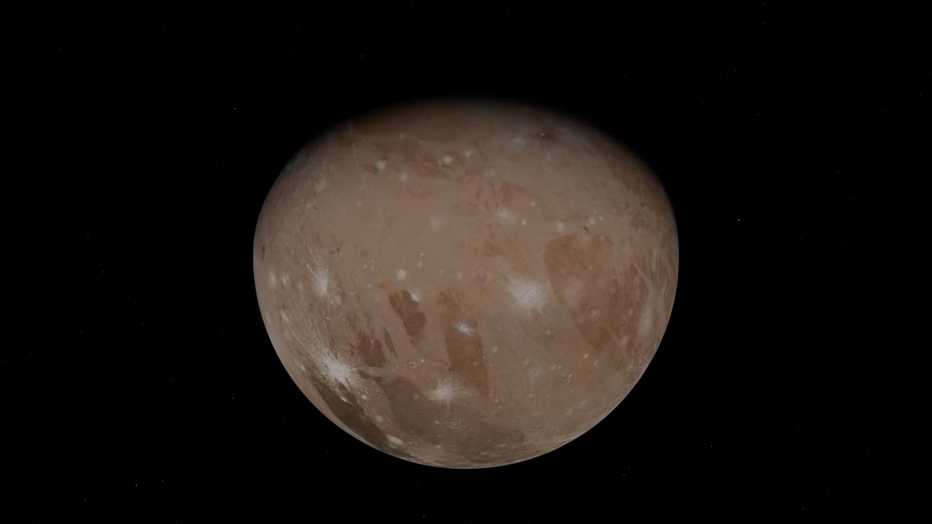NASA probe offers dramatic glimpses of Jupiter and its moon Ganymede
NASA’s Juno spacecraft flew closer to Jupiter’s moon Ganymede than any spacecraft in the last two decades, according to NASA. The moon is the largest in our solar system.

(FILE-A screenshot from the animation video showing Jupiter and the "string of pearls." Credit: NASA/JPL-Caltech/SwRI/MSSS)
"This is the closest any spacecraft has come to this mammoth moon in a generation," said Juno Principal Investigator Scott Bolton of the Southwest Research Institute in San Antonio.

(FILE-One of the first images of Ganymede taken by NASA's Juno spacecraft during a June 7, 2021, flyby of Jupiter’s giant moon. Credits: NASA/JPL-Caltech/SwRI)
Ganymede is one of Jupiter’s 79 confirmed moons and it’s the only moon with its own magnetic field. It’s also thought to have an underground saltwater supply. Forty percent of the surface of Ganymede is covered by highly cratered dark regions, and the remaining 60 percent is covered by light grooved terrain.

(FILE-A screenshot from the new animation video shows Ganymede, the biggest moon in the solar system. Credit: NASA/JPL-Caltech/SwRI/MSSS)
The Juno spacecraft also captured images of Jupiter less than a day later. The spacecraft raced from one pole to another in less than three hours in its 34th flyby of the gas giant.
The mission team put together an animation to provide a "starship captain" point of view using the spacecraft’s JunoCam imager.

(FILE- A screenshot from the animation video showing Jupiter, captured by the Juno spacecraft. Credit: NASA/JPL-Caltech/SwRI/MSSS)
It takes Juno 14 hours and 50 minutes to travel the 735,000 miles between Jupiter and Ganymede. Viewers are brought within 2,100 miles of Jupiter’s cloud tops.
The planet’s powerful gravity accelerated the craft to almost 130,000 mph, according to NASA.
From this perspective, one of the features that can be seen is the circumpolar cyclones at the north pole. Five of the gas giant’s "string of pearls"— eight massive storms rotating counterclockwise in the southern hemisphere that appear as white ovals — can also be seen.
NASA simulated what the lighting would look like in the animation using information from Jupiter’s atmosphere.
The camera’s point of view for the time-lapse animation was generated by citizen scientist Gerald Eichstädt, using composite images of the planet and its moon.

(FILE- A screenshot from the animation video showing Jupiter and the "string of pearls." Credit: NASA/JPL-Caltech/SwRI/MSSS)
Juno’s next flyby of Jupiter is scheduled for July 21.
This story was reported from Baltimore.

